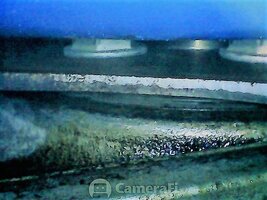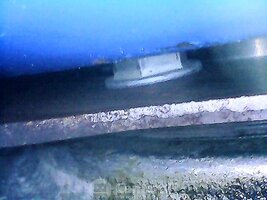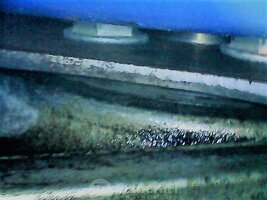- Jul 22, 2015
- 2,724
About to change my oil (3rd time by me, and probably 5th time since having the truck); this happens every time, and I promised myself I'd bring it up the next time I changed the oil.
As you 5.3L owners know, our engines require 6qt at change, vs the extra quart that the I-6s require. Here's the thing... within a week or so after a change, I'll lose that 6th quart, per the dipstick. But after I add the quart to replace it - the engine doesn't use / lose any more for the remainder of the OCI - and since I drive < 5K /yr, that's basically an 'annual' oil change.
While I've been working on the truck the past few months (new water pump, plug replacement, among other things), I've noticed *no* leaks from front cover, valve covers, etc. There *is* a slow leak from underneath - but the best I can tell, it's from the bottom - either the oil pan or the rear seal, would be my guess, based on what I see on the first 2" or so on the bottom of the bellhousing (I don't see an 'active' leak there, but it does look 'dirty' / 'darker' in that area, so that leads me to believe the rear main seal has gone south). Obviously, if I'm not leaking enough to change the level of the dipstick over a year's time (after putting in that extra quart as mentioned above), it has to be a pretty slow leak.
Wondering if anyone else with the 5.3 has experienced similar issues, and discovered the cause. Given that I do check the oil level every time I start it up after sitting awhile, I'm not really looking forward to pulling the motor for the pan (plus it's a 4x4), or the trans for the main seal (I suppose that would be the easier of the two) until spring. I'm not even sure I'd do the main seal myself, to be honest, as I have limited room, and work alone.
If it does turn out to be the main seal, what's going to p!ss me off even more about that, is that it was likely visible when I had the trans rebuilt a year or so ago - by the time I thought to bring it up, they were already done with the R&R. But if they were worth their salt, IMO, they would have known that I'd have readily approved replacement of that seal, had they called and said "we noticed..."


As you 5.3L owners know, our engines require 6qt at change, vs the extra quart that the I-6s require. Here's the thing... within a week or so after a change, I'll lose that 6th quart, per the dipstick. But after I add the quart to replace it - the engine doesn't use / lose any more for the remainder of the OCI - and since I drive < 5K /yr, that's basically an 'annual' oil change.
While I've been working on the truck the past few months (new water pump, plug replacement, among other things), I've noticed *no* leaks from front cover, valve covers, etc. There *is* a slow leak from underneath - but the best I can tell, it's from the bottom - either the oil pan or the rear seal, would be my guess, based on what I see on the first 2" or so on the bottom of the bellhousing (I don't see an 'active' leak there, but it does look 'dirty' / 'darker' in that area, so that leads me to believe the rear main seal has gone south). Obviously, if I'm not leaking enough to change the level of the dipstick over a year's time (after putting in that extra quart as mentioned above), it has to be a pretty slow leak.
Wondering if anyone else with the 5.3 has experienced similar issues, and discovered the cause. Given that I do check the oil level every time I start it up after sitting awhile, I'm not really looking forward to pulling the motor for the pan (plus it's a 4x4), or the trans for the main seal (I suppose that would be the easier of the two) until spring. I'm not even sure I'd do the main seal myself, to be honest, as I have limited room, and work alone.
If it does turn out to be the main seal, what's going to p!ss me off even more about that, is that it was likely visible when I had the trans rebuilt a year or so ago - by the time I thought to bring it up, they were already done with the R&R. But if they were worth their salt, IMO, they would have known that I'd have readily approved replacement of that seal, had they called and said "we noticed..."




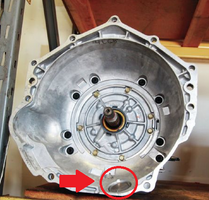

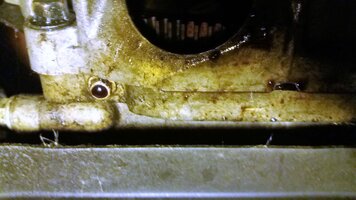
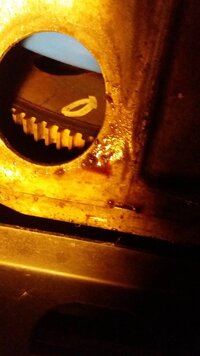
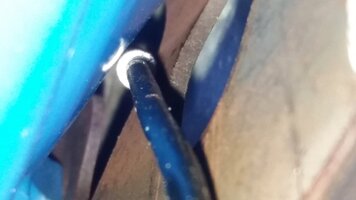
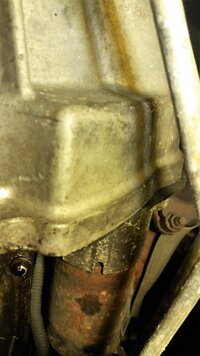

 The shop that did it is pretty decent, IMO - they do a lot of work on LSx engines, including two of their project cars - one of which is a '71 Monte with a twin turbo LS2. Now, if there isn't an issue with the rear main...that would explain why they didn't call and tell me they noticed a leak from it - as I know that would've been a perfect time to address it - and they know I would've readily given the approval for it, given all the info I gave them on the 4L60, what I did to it, and what I wanted from it (we're talking 2.5 pgs of single-spaced document, and the shop owner told me he read that *very* carefully...LOL)
The shop that did it is pretty decent, IMO - they do a lot of work on LSx engines, including two of their project cars - one of which is a '71 Monte with a twin turbo LS2. Now, if there isn't an issue with the rear main...that would explain why they didn't call and tell me they noticed a leak from it - as I know that would've been a perfect time to address it - and they know I would've readily given the approval for it, given all the info I gave them on the 4L60, what I did to it, and what I wanted from it (we're talking 2.5 pgs of single-spaced document, and the shop owner told me he read that *very* carefully...LOL) 


